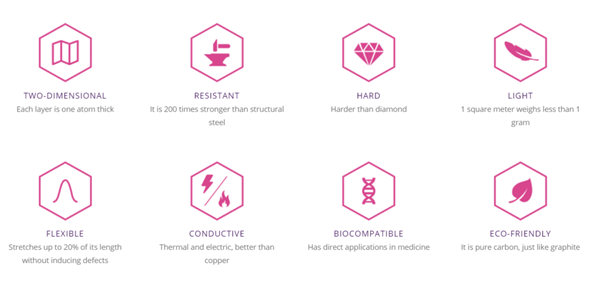With the advancing technology, not just technologic devices like phones or televisions but also our cars, even homes have been evolved to “smart” in the last decade; thus, we’re becoming more and more dependent on power sources. In terms of energy supplies, lithium ion batteries are leading for the time being; but this fact seems like changing.
Find All Applications of Graphene here: 60 Uses of Graphene – The Ultimate Guide to Graphene’s (Potential) Applications in 2019
Different than other battery types, lithium ion battery has the lightest weight, highest voltage and highest energy density. Also having a long service life, the most common power source for consumer electronics is lithium ion batteries.
However, although it has numerous benefits, its disadvantages cannot be ignored. Due to the high capacity and large serial-parallel numbers, lithium ion batteries can cause problems concerning safety, durability, uniformity and cost. Moreover, it can be over-charged or over-discharged affecting the performance by the time. And transportation is another issue, since li-ion batteries represent shipping hazards. So, is there a more efficient alternative? Let’s talk about graphene batteries.

In 2004, two professors from University of Manchester isolated a single atomic layer of graphene for the first time. With this progress, studies on graphene have stepped up and since then, it’s been used in countless areas from touch screens to cars and aircrafts. What about power sources? A case is from Samsung. As the first step, company developed “graphene balls” to boost the capacity of its current li-ion batteries by 45 percent and it worked pretty well. In this context, Samsung released its new graphene-based battery which will be charged fully in 12 minutes, compared to approximately an hour for an ordinary battery.
Advantages of Graphene Battery
Compared to the best li-ion battery we use today, graphene battery has five times more energy density. In addition, after 400 charge/discharge cycles, no loss of capacity observed. Referring to the first paragraph, we said li-ion batteries may cause problems including explosion. Opposed to this fact, graphene batteries are more reliable in terms of safety. What is more, as graphene is an allotrope of carbon which can be found in nature, using it over lithium is eco-friendly and low-cost.
Future of Graphene Battery
The Graphene Flagship brings over 150 academic and industrial research groups from 23 countries aiming to generate economic growth, new jobs and opportunities with the help of graphene as an industrial material. Funded by the European Union with a budget of €1 billion, Graphene Flagship is building Europe’s biggest search initiative ever. Since the future depends on sustainable and biocompatible materials, also we are reliant on energy. Thus, graphene batteries seem to be the first choice of the society in coming years.



Comments
Post a Comment